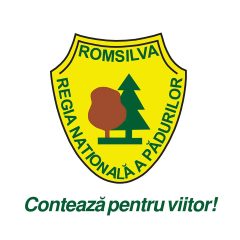Coldău Valley Forest, Beclean Forest District
Stop 1. General Information


The route starts from Coldău Chalet (GPS coordinates: 47.197127 / 24.154496) and ends at Cetățele Lake (GPS coordinates: 47.212722 / 24.144858).
This educational route starts from Coldău Chalet, goes through forest unit 142 from Management Unit IV Chiuza, a state-owned forest managed by Beclean Forestry District, and it continues to forest unit 8, a forest belonging to administrative-territorial unit Căianu-Mic, on existing footpaths and take-out roads, until meeting on the right with forest unit 58 of the same owner, and on the left with forest unit 137, forest belonging to natural persons, continuing to Cetățele Lake.
The forest species of trees and bushes you will encounter in this area are the following: sessile oak (Quercus petraea), hornbeam (Carpinus betulus), beech (Fagus sylvatica), black locust (Robinia pseudoacacia), aspen (Populus tremula), ash (Fraxinus excelsior), black walnut (Juglans nigra), silver birch (Betula pendula), red oak (Quercus rubra), sycamore (Acer pseudoplatanus), weeping willow (Salix babilonica), staghorn sumac (Rhus typhina), ailanthus (Ailanthus altissima), dog rose (Rosa canina), blackthorn (Prunus spinosa), sea-buckthorn (Hippophae rhamnoides), common hawthorn (Crataegus monogyna) etc.
The species of wild animals that can be found within the range of this educational route are the roebuck (Capreolus capreolus), the European hare (Lepus europaeus), the wild boar (Sus scrofa), the red fox (Vulpes vulpes), the black stork (Ciconia nigra), the salamander (Salamandra salamandra), the marten (Martes martes), the badger (Meles meles), the crested newt (Triturus cristatus).
What is the forestry economy and who manages the forests?
The forestry economy represents all the planned and intentionally executed human activities in forests. Think about activities such as forest exploitation, reforestation, forest research, environmental and nature protection operations, game management, management of harvesting and exploitation of forest products such as fruits and mushrooms, raising horses, trouts etc.
These activities carried out by forestry staff of Bistrița Forestry District are managed and controlled by National Forest Administration – Romsilva (Regia Națională a Pădurilor – ROMSILVA) and National Forestry Guard (Garda Forestieră Națională), under the authority of Ministry of the Environment, Waters and Forests (Ministerului Mediului, Apelor și Pădurilor).
These activities aim to organize and implement a sustainable and unitary household system at the national level, in compliance with the laws and regulations in force, so that they contribute as much as possible to improving environmental conditions and economic development.
The state-owned forests are managed evenly throughout the country so that in each county of the country there is a forestry directorate. The management of such large forest areas at the county level requires the existence of territorial subunits, called forestry districts.
It should be noted that at the Romsilva level, the activities carried out are very complex, so the structure includes not only 41 forestry directorates, but also 22 national and natural park administrations, and 16 stud farms.
The Role and Importance of the Forest
The forests play a very important role in maintaining the ecological balance of our planet. These are essential to ensure that natural resources and the environment are protected and preserved for future generations. Here are some of the most important roles and benefits of the forest
Contributes to climate regulation: Forests absorb carbon dioxide from the atmosphere through photosynthesis and turn CO2 into oxygen, helping to regulate the climate. They absorb and retain heat, thus limiting climate change.
It provides natural resources: Forests provide a wide range of natural resources such as wood, paper, berries, mushrooms and other forest products. They also have recreational and touristic value.
Protects soil and water quality: Forests protect the soil against erosion and retain water in the soil. They also play an essential role in filtering and cleaning water, limiting water and soil pollution.
It provides habitats for animals and plants: Forests provide natural habitats for a wide range of animal and plant species. They are important for the conservation of biodiversity and the maintenance of ecological balance.
In general, the forests are essential for the health of our planet and all living things on it. It is important to protect and carefully manage these valuable ecosystems to ensure a sustainable future.
Rules for accessing and visiting ROMSILVA educational routes
- This regulation establishes the rules of conduct and the safety rules applicable to visitors of the ROMSILVA educational routes.
- Covering ROMSILVA educational routes is done at your own risk by reading and understanding these regulations. The teaching staff and the group supervisor have an obligation to ensure that the student and/or the minor respects the rules of conduct and safety.
- Accessing and visiting ROMSILVA educational routes is done only in compliance with the rules for visiting the route, according to this Regulation.
- The access and visiting ROMSILVA educational routes in February-June, the period related to the implementation of the national program “Different School” and “Green Week” is done only on the basis of prior appointment, accompanied by teaching staff.
- Depending on the weather conditions and the practicability of the route, the administrator of the educational route can restrict access to the route even for groups that already had a scheduled visit, considering the safety of the visitors.
- The access of groups of students and/or minors is allowed only with companions, respectively teachers or legal guardians.
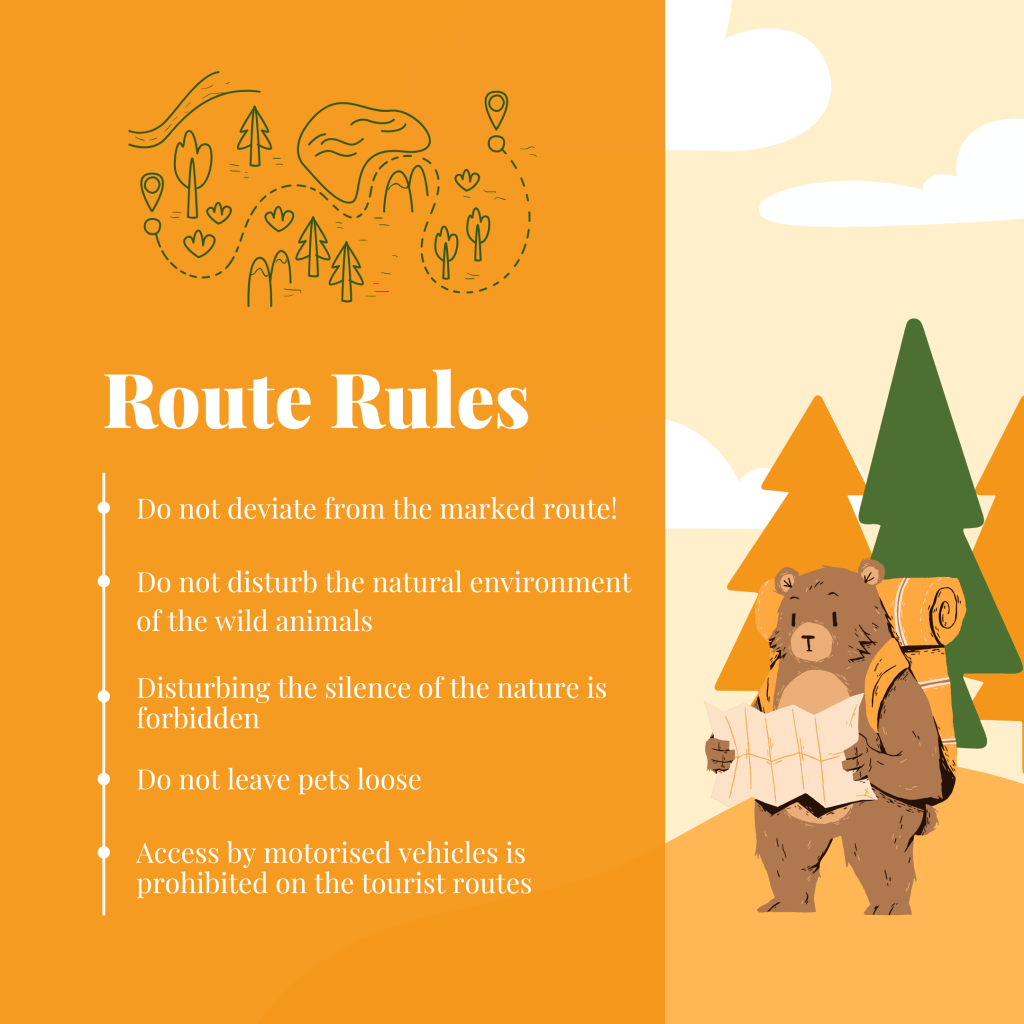
The lighting of fires on ROMSILVA educational routes is regulated as follows:
- lighting fires in the forest is prohibited throughout the educational route. The use of grills is not allowed. Fire prevention and extinguishing rules will be followed;
- it is forbidden to cut, break or pull out of the roots of trees, as well as the use of those felled or broken by natural phenomena, the bushes for fire.
The waste regime outside the village, on ROMSILVA educational routes, is regulated as follows:
- it is forbidden to abandon and/or incinerate waste of any kind throughout the ROMSILVA educational routes. The waste will be disposed of in specially arranged places. Each group or visitor will dispose of their waste in specially arranged places;
- the administrators and/or owners of the lands located within the perimeter of the ROMSILVA educational routes are obliged to permanently sanitize the surfaces affected by the abandonment of waste, household waste and other such, and at the same time to take measures to prevent environmental pollution on their properties;
- each administrator of the ROMSILVA educational routes, if they cannot manage the sanitation with their own resources, will conclude service contracts with specialized companies
Work Assignment!
Hug trees as you walk, measure their trunk diameter, and if it’s too difficult to do it yourself, ask your friends for help! If you come here during the heat, try to remember how hot it is on the asphalt road between the blocks, and if you pass by when it’s snowing, remember how much snow there is in the city. Compare it with what you experienced in the forest!

Stop 2. The Development Stages of a Forest

The development of a forest is a complex process that can take hundreds or even thousands of years, and during its time several stages of development can be identified.
In trees, the development cycle starts from the moment of fertilization of the egg cell and ends with the death of the tree (its removal from the stand), and in stands it starts from the moment the state of massive is established and ends when the stand is exploited or destroyed for some reason.
In an equian arboretum, consisting of trees of the same age, several stages of development are distinguished, as follows:
- The regeneration stage begins after the destruction of the forest due to various causes, such as fires, logging or other human interventions. At this stage, the remaining seeds or roots begin to grow and develop, giving rise to a new generation of trees.
- The youth stage begins with the installation of the new generation and the establishment of the massive state and lasts until most of the trees start to bear fruit. The duration of this stage varies depending on the temperament and provenance of the species, forest site conditions, as well as silvotechnical interventions. Young trees proliferate and begin to compete for resources such as light, water and food. Within this stage, several stages (phases) of development are distinguished: seedling stage, brush stage, thicket stage and pole stage.
- The stage of maturity begins with the first abundant fruiting of the tree and lasts until the trees show obvious signs of drying. This stage presents the following phases of development: the young timber stage and the high forest stage.
- The old age stage began when the old trees left standing, being few in number and reaching the limit of physiological longevity, showing apparent signs of drying. This stage ends with the drying of all specimens in that generation. At this stage, which has only one step – old high forest – biomass losses are more significant than accumulations, height growth stops, much of the crown dries out, and vitality is reduced to a minimum, after which it ceases.
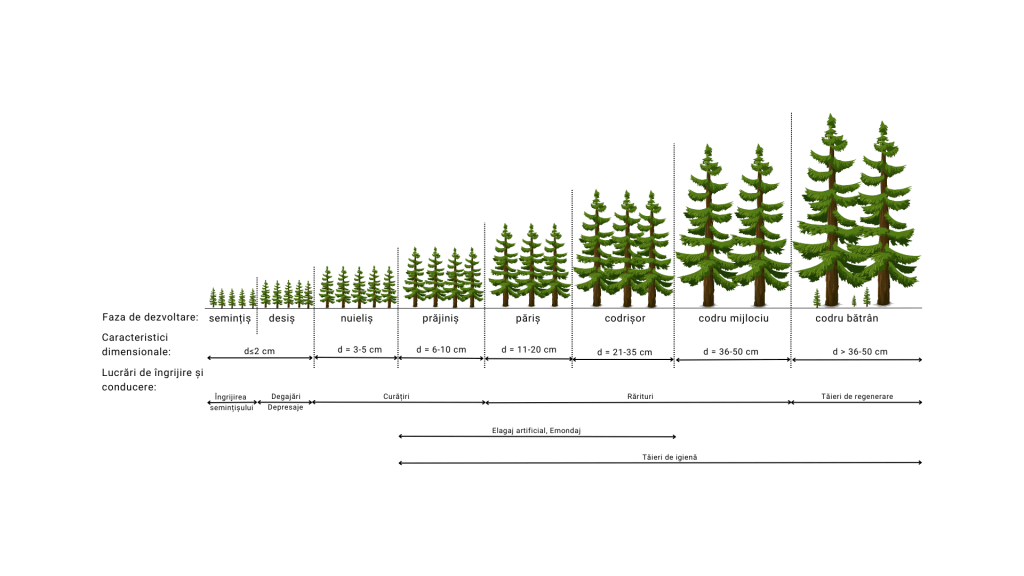
The works of care and management of arboretums
The essential purpose of the works of care and management of the stands is to achieve or favour the formation of optimal structures of the stands under ecological and genetic relation, in order to increase the multiple functional effectiveness of the forests, both in terms of protective effects and wood and non-wood production.
The main works of care and management of the arboretums are the following:
1. Release, cutting
This work, carried out in the seedling and brush stages, aims to protect the valuable main species against overwhelming secondary species or from other sources, considered inappropriate.
3. Thinning work
Thinnings are the care works carried out periodically in the stands, in the stages of pole stage, early timber stage and high forest stage, which reduce, through positive selection, the number of specimens per surface unit, temporarily reducing the consistency, in order to improve the structure, the growth and quality of stands and their functional effectiveness.
5. Tending of massif edge
This care work is carried out at the forest edges, by early thinning of the stands since their establishment, to increase the resistance of the individual trees which will thus form their developed crowns close to the ground and strong rooting in order to protect the forest against the wind.
7. Brashing
This care work refers to the cutting of epicormic branches, which appear on the trunk of trees, from dormant buds, in unfavourable conditions. Epicormic branches frequently appear in sessile oak and pedunculate oak, as well as in poplar stands, in specimens suddenly exposed to light, without a well-developed crown. Also, epicormic branches appear on trees in the process of drying, being a sign of their physiological weakening.
2. Cleaning work
This is a negative selection maintenance work applied to stands in the thicket and pole stages, with the aim of improving the quality, growth and composition of the stand, by removing malformed, injured, diseased, dry, crowded or overwhelmed trees or belonging to less valuable species or genetic forms.
4. Sanitary Cutting
In the stand, sanitary cuttings are applied starting from the pole stage and the aim is to ensure an appropriate phytosanitary state of stands, by extracting dry or drying trees, fallen, broken and knocked down by wind and snow, heavily attacked by insects, without that through these works the biodiversity of the forests will be reduced.
6. Artificial Pruning
This is a special work aimed at increasing the proportion of knot-free wood suitable for high-quality varieties. It is applied selectively, in stands of superior or at least medium productivity, only on trees of value. The work consists in removing the dry branches from the base of the stems, at a height of 2-3 meters, and during the subsequent returns, it is advanced up to 5-6 meters, respectively up to about 8 meters.
Stop 3. Forest markings

In the forest, you can see different forest markers. They are generally applied to trees (sometimes also to artificial forest boundary stones) and serve to delimit the forest fund for its good management.
The form of forest markers differs according to the purpose they serve.
Simple horizontal strip – Subcompartment boundary
The limit of a homogeneous surface from the perspective of component species, age and vegetation conditions. If you are standing with your back to a subcompartment boundary, you should see the next tree marked with a subcompartment line. So each marked tree carries a subcompartment boundary for each of the directions.

Circular horizontal band
The intersection of two subcompartment boundaries or the intersection of a compartment boundary and a subcompartment boundary. The limit of a homogeneous surface from the perspective of component species, age and vegetation conditions. If you are standing with your back at a subcompartment boundary, you should see the next tree marked with a subcompartment line. So each marked tree carries a subcompartment boundary for each of the directions.

Two circular double horizontal bands separated by a white band
The intersection of compartment boundaries.
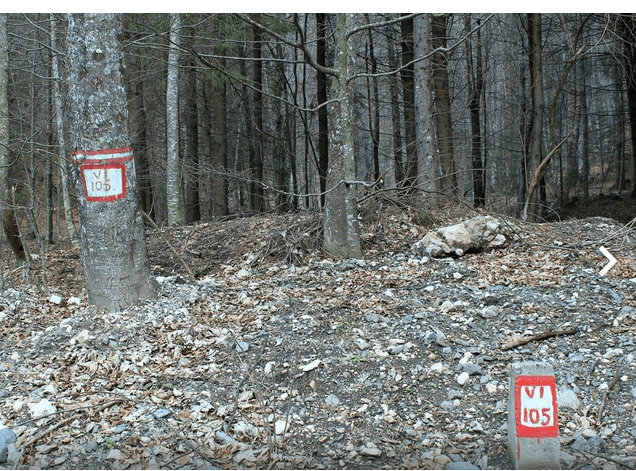
Forest boundary stones
White square with coloured border inside which are two numbers: Roman numerals and Arabic numerals. Landmark to identify the position on the forestry map. This marker is found on the same tree as the marker with two horizontal double bands separated by white tape (compartment boundary intersection). The Roman numeral represents the management unit and the Arabic numeral represents the forest boundary stone number
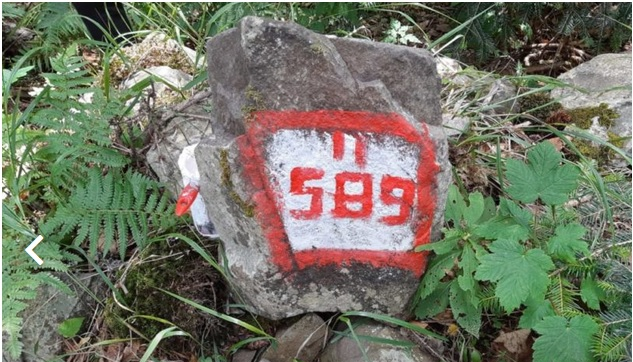
Single vertical strip – Compartment boundary
If you stand with your back to a compartment boundary, you should see the next tree marked with a compartment line. So each materialized tree carries a compartment boundary for each of the directions.

Double vertical strip – Management Unit Limit
This is the area on which the specific forest management works are planned. In general, the management unit is represented by a watershed.

Letter “H” – Forestry District limit
This is an administration of one or more management units
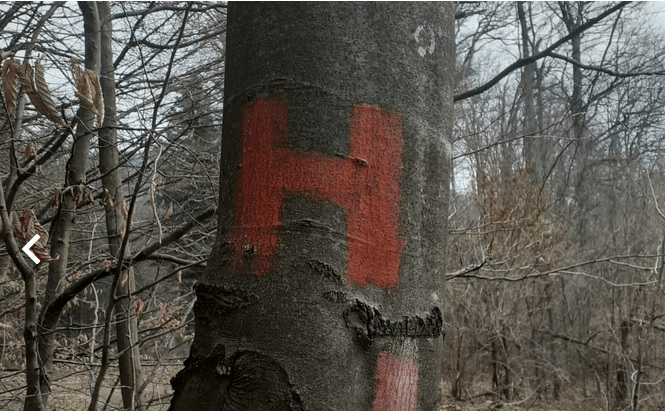
Dot
Trees from which seeds are harvested

Simple Arabic numerals
Inventory numbers for various research

Stop 4. The main species of trees that we can see on this route

In this forest area, you will encounter the following forest species of trees: sessile oak (Quercus petraea), hornbeam (Carpinus betulus), beech (Fagus sylvatica), Norway maple (Acer platanoides), wild cherry(Cerasus avium), field maple (Acer campestre), aspen (Populus tremula).
The Hornbeam (Carpinus betulus)
The scientific name of this forest species is Carpinus betulus and it belongs to the family Betulaceae, genus Carpinus.
The genus Carpinus encompasses over 25 species of trees and shrubs found in temperate and subtropical regions of Europe, North America, Japan and China. They have smooth bark with ridges appearing in old age, ovate-elliptical leaves and monoecious flowers grouped in catkins. The fruit is a notched achene, topped with traces of perianth and persistent styles at the base of a fruiting involucre generated by the union of two bracteoles with a bract. Species of this genus can also sprout and sucker. They rarely form pure stands and are typically found in mixtures of beech, oak and other deciduous trees.

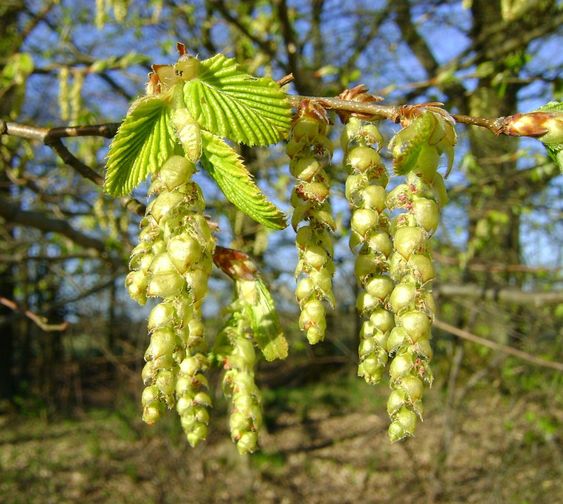

Did you know?
The oldest hornbeam tree was founded in Rheinberg-Orsoy (Wesel), Germany, estimated to be around 463 years old. The tallest tree of the hornbeam species was measured in Kasteel Gaasbeek, Belgium, in 2012, reaching 34,40 meters. In 2002, the largest diameter of a hornbeam tree was recorded in Ware Park, Ware, in southeast England, measuring 6.85 meters.
The Sessile oak (Quercus petraea)
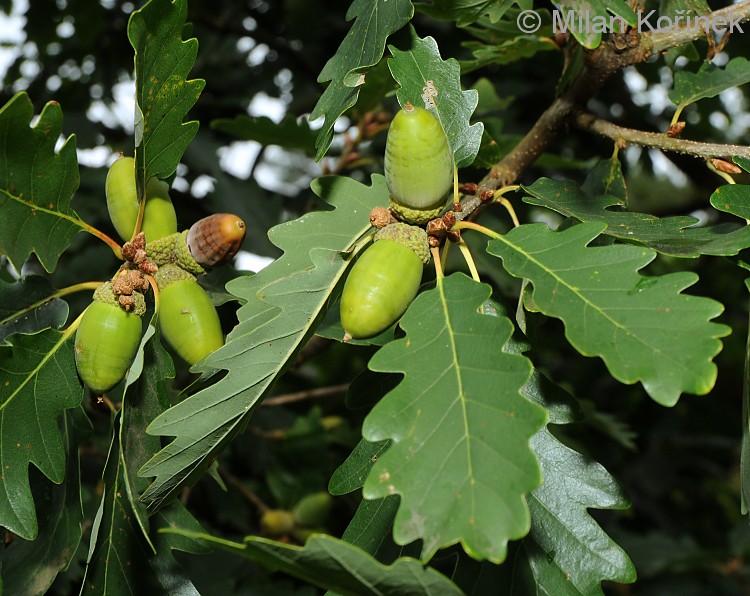

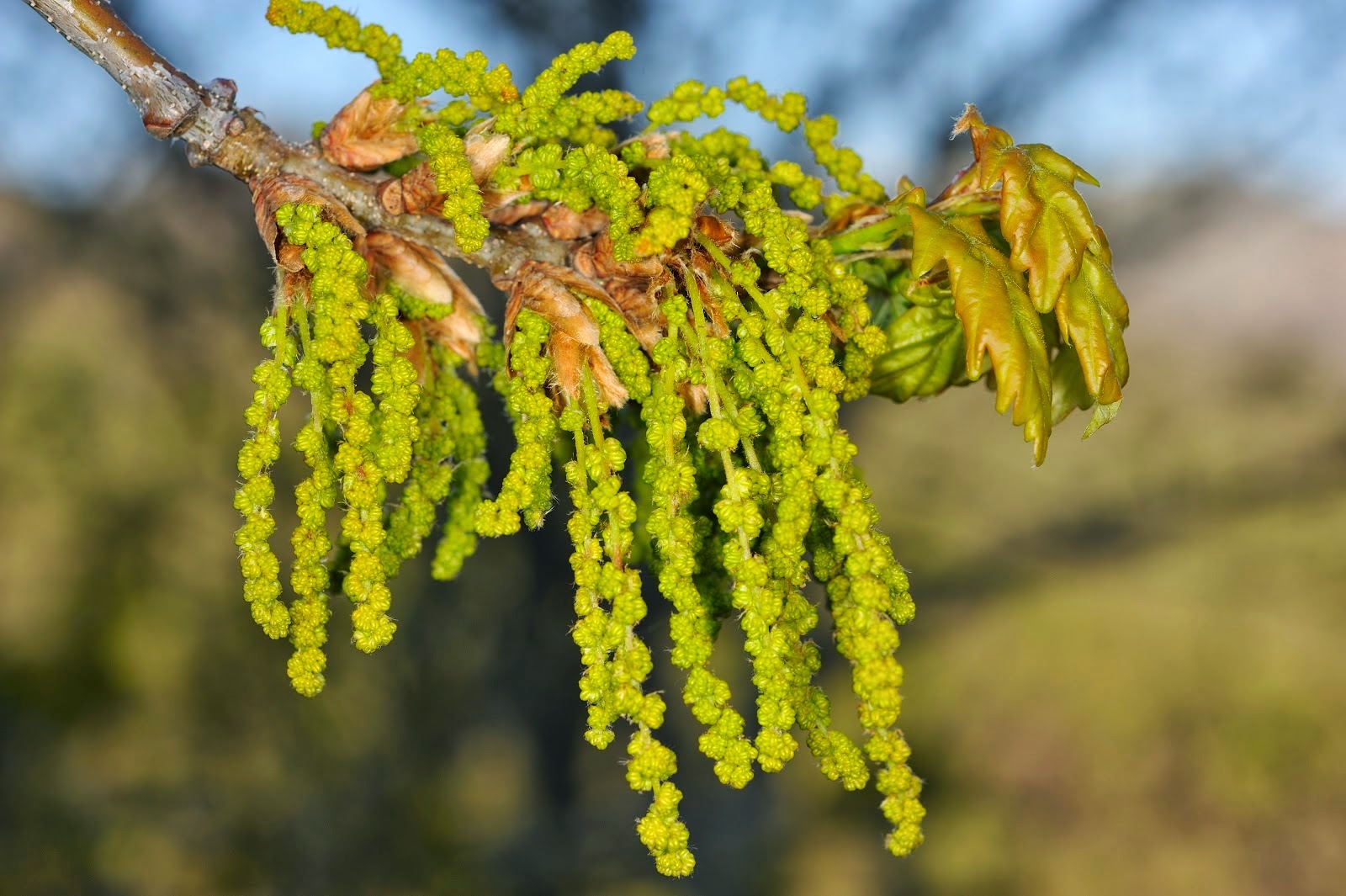
The sessile oak, also known as Quercus petraea, belongs to the family Fagaceae and the genus Quercus. The scientific name of the genus Quercus means “oak”, a tree that symbolizes strength and immortality, often referred to as the “king of the forest”.
The genus Quercus encompasses over 200 species, mostly trees and rare shrubs, with vast distribution in the temperate and subtropical regions of the northern hemisphere. In Romania, oak species occupy 19% of the forest land.
The sessile oak is a native deciduous tree that can reach heights of 35-45 meters and diameters of 1-3 meters and is found at altitudes between 300-1500 meters in deciduous forests, pure oak groves, or in association with beech and hornbeam, as well as other forest species. It can live up to approximately 600-700 years, but some specimens can reach over 1000 years.
The root system is the taproot, the trunk is straight and cylindrical and can be traced up to the top. The crown is rich and the bark forms a relatively thin, grey-blackish, finely cracked rhytidome that peels off superficially as the tree ages.
The wood is extremely valuable and is used for furniture making, carving and cooperage. It is also suitable for the construction of boats or for interior decorations and designs.
The leaves are oval, uniformly lobed with five to six lobes on each side, symmetrical, with a broadly rounded tip and a dark green colour. They are 7-14 cm long, 4-8 cm wide and have a 1 cm long petiole. Leaves collected before May 15th can be used for medicinal purposes.
The sessile oak has both male and female flowers on the same tree. The male flowers, called “catkins”, are green and appear in the spring, while the female flowers are in the form of a cluster and appear at the beginning with the first leaves. After wind pollination, the fruit – a 2-3 cm long acorn – is formed. The fruit is green at first and matures in six months, turning brown. They grow in groups of 2-6, attached directly to the branches, and are not provided with a petiole. The fruit contains a substance called quercetin, which is toxic but can be destroyed by boiling or roasting the acorns.
Did you know that both acorns and leaves contain large amounts of tannic acid, small amounts of volatile oil and pyrogallic acids? These substances are toxic and can cause gastrointestinal toxicity and kidney dysfunction in sheep, especially if consumed in the spring when the leaves are young and the acorns are consumed green and unripe in the fall, which are much more toxic than the brown ones. The tannin content decreases with the maturity of the tree.
The sessile oak is a valuable commercial species used for construction, tanning leather, providing a valuable source of firewood and charcoal, as the wood is resistant to liquids, insect attacks and fungi. Another importance of this tree is that it offers a valuable food source for many birds and mammals.
Would you like to know the difference between the sessile oak and the pedunculate oak? These two species are very similar, as they belong to the same family, but there are still differences that can help us identify them. The leaves of the sessile oak are more elongated, and uniformly wavy, with a rectangular shape, veins not very prominent and a petiole of approximately 1 cm long. The leaves of pedunculate oak are shorter and less uniformly wavy, with smaller lobes at the base and at the top and larger lobes in the centre, giving them a diamond-shaped appearance. The veins on the leaves are more prominent and the leaf petiole is very short, almost non-existent. Another clue is the colour of the leaves, which in the case of the sessile oak is dark green with a slight violet hue on the underside, a hue that is absent in the pedunculate oak. You can also notice a difference in the position of the acorns on the branches. You will see that the acorns of the sessile oak do not have stems and are fixed directly to the branches, while the acorns of the pedunculate oak have stems and hang from them.
The Aspen (Populus tremula)
The aspen belongs to the Salicaceae family, Populus genus, and its scientific name is Populus tremula. It is a tall tree that can reach up to 20-30 meters in height, with a conical crown and a trunk covered by grey-green bark.
The tree has a strong and deep root system, which makes it ideal for planting in areas prone to landslides or along riverbanks, as it prevents soil erosion.
The name “tremula” comes from its leaves, which are rounded, slightly uneven, with a long and thin petiole, and which “tremble” at the slightest breeze. During spring, in March-April before leafing, the aspen blooms with yellow-greyish flowers, 10-15 cm long, in the form of clusters. The fruit ripens in May, and the seeds are small, oily, and easily spread by the wind.
The wood of aspen is lightweight and soft, making it easy to work with. It is used to manufacture a wide range of products, such as paper, packaging, furniture, musical instruments and construction structures.
The Aspen is also used for medicinal purposes. Extracts from its bark and leaves contain substances with anti-inflammatory, antitumor and analgesic properties.
The aspen is a fast-growing tree with a relatively short lifespan, capable of growing and reproducing easily. In Romania, this species is commonly found in mountainous areas, but it can also be found in hilly and plain areas. It is an undemanding species regarding environmental conditions, resisting long and cold winters, high-temperature fluctuations, and having a light temperament.
This forest species is important for the surrounding ecosystem, as it provides habitat for numerous animal and bird species, as well as for pollinating insects.
The Beech (Fagus sylvatica)
The beech belongs to the Fagaceae family and the scientific name of this species is Fagus sylvatica. It is a tree native to Europe and parts of Western Asia. It is a tall tree that can reach heights of 30-40 meters and can live up to approximately 300 years.
The stem is straight, cylindrical, and the smooth, grey bark has large whitish spots that are actually crustacean lichens. The crown is dense and rounded, with large (5-10 cm long) glossy, oval or oblong leaves that turn brown in the autumn. When young, beech leaves have soft hairs on both sides.
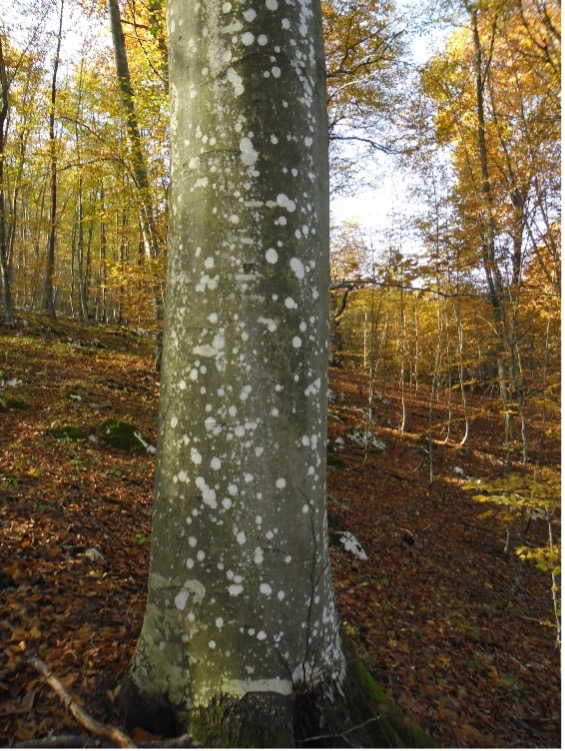
The flowers appear together with the foliage, in April-May. The beech produces fruits that are called beech-nut, a trichotomous achene, which is covered with a spiny shell. Beech-nut is an important source of food for various animal species such as wild boars, squirrels and mice.
Beech wood is used for a variety of purposes, including making furniture, tools and paper. Beech can be used to produce charcoal, which is a slow-burning fuel with low greenhouse gas emissions.
Beech prefers moist and fertile soils and can be found in mixed or pure beech forests. It is an important species for the conservation of biodiversity, being a shelter for many other species of plants and animals.
Beech also has medicinal uses, being used in treatments for certain respiratory and digestive ailments. Also, some studies suggest that certain substances in beech leaves may have antioxidant and anti-inflammatory effects.


Did you know?
- In World War I, beech was used to make dentures because its wood is easy to process and does not contain toxic substances.
- In Germanic mythology, the beech was considered a holy tree, symbolizing wisdom and strength. In some traditions, a person who kept a beech nut in his pocket was protected from spells and bad luck.
- Beech leaves can be used to produce a yellowish-green pigment, which was used in the past to dye textiles and paper.
- In many European cultures, the beech is associated with the idea of stability and durability. In British tradition, for example, the beech tree is a symbol of solidarity and enduring strength.
The Black Locust (Robinia pseudoacacia)
The black locust belongs to the Fabaceae family, and is an exotic species native to North America, but has been introduced and cultivated in Europe and other parts of the world for its quality wood and attractive flowers.
The black locust can grow to a height of 25-30 meters and has an oval or rounded crown. Its leaves are compound, with 7-19 elliptic leaflets (small leaves) and have a characteristic pea smell when crushed.
The black locust produces white or pink flowers that appear after leafing in May or June and are very attractive to bees and other pollinating insects. The fruits it produces are long, flat, dark brown pea-like pods containing small seeds. They ripen late in autumn and hang on the branches until early spring.
The black locust wood is valued for its hardness and strength, being used in construction, furniture and musical instruments.
Although the black locust has a reputation as an invasive tree in some areas due to its ability to reproduce quickly and form dense thickets, it also has ecological benefits. The black locust can fix nitrogen in the soil, which makes it useful for soil improvement and can serve as a habitat for various animal species.
In traditional medicine, the black locust has been used to treat various ailments such as coughs and inflammations.


Did you know?
- The black locust’s flowers are edible and can be used to make jams and other food products.
- In some areas, the black locust is considered a lucky tree and is often planted in gardens and yards to bring good luck and prosperity to the family.
- Some Native American cultures used black locust bark to produce a brown or black dye for fabrics and other products.
Stop 5. Fauna that we can meet on this route

Protecting wild animals in the forest is very important for several reasons. First, wild animals play an important role in maintaining the ecological balance in the forest. They play an essential role in the food chain and contribute to soil regeneration and plant pollination. Second, forest wild animals represent an important resource for humans. They can be hunted for food, and their skin and fur can be used for clothing or to make certain items. In addition, protecting forest wildlife is important to maintain biodiversity and protect endangered species. Forests are the natural shelter of many wild animals, and the degradation of their habitat can lead to a decrease in the number of specimens or even their disappearance. Protecting forest fauna can be done by creating protected areas, where hunting and other human activities are prohibited or restricted.
The species of wild animals that can be found within the range of this educational route are the roebuck (Capreolus capreolus), the European hare (Lepus europaeus), the wild boar (Sus scrofa), the red fox (Vulpes vulpes), the black stork (Ciconia nigra), the salamander (Salamandra salamandra), the marten (Martes martes), the badger (Meles meles), the crestet newt (Triturus cristatus).


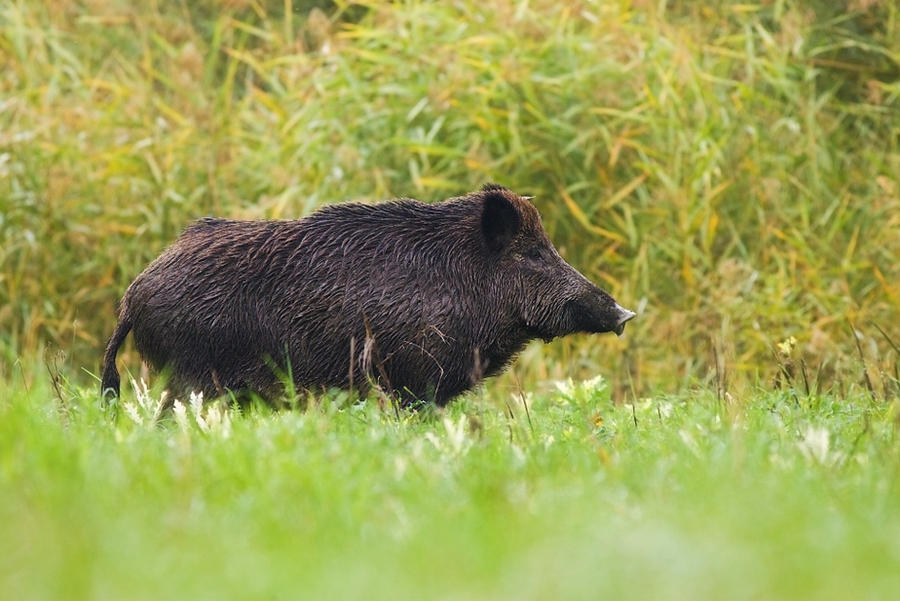




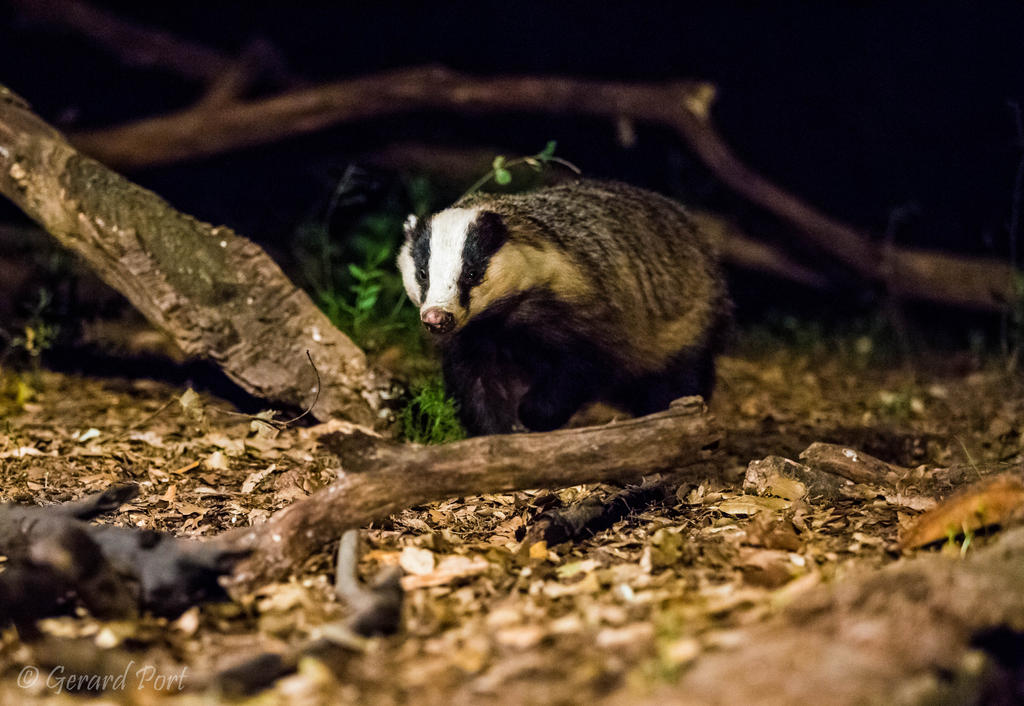

In order to protect the hunt and other species of wild animals that may be found in this forest, the forestry personnel of Beclean Forest District repair and build feeders, observation posts or salt licks. During the cold season, but especially during very harsh winters, supplementary food such as corn or hay is distributed so that game specimens do not suffer from a lack of food, which can lead to their weakening or even death.
To prevent wild animals from being exposed to dangers or predators, feeders are placed in sheltered but not isolated areas, where there is no risk of rain washing away the food or of fire or pollution. Such installed feeders require regular cleaning to prevent the appearance of diseases and parasites, which could affect the health of wild animals.
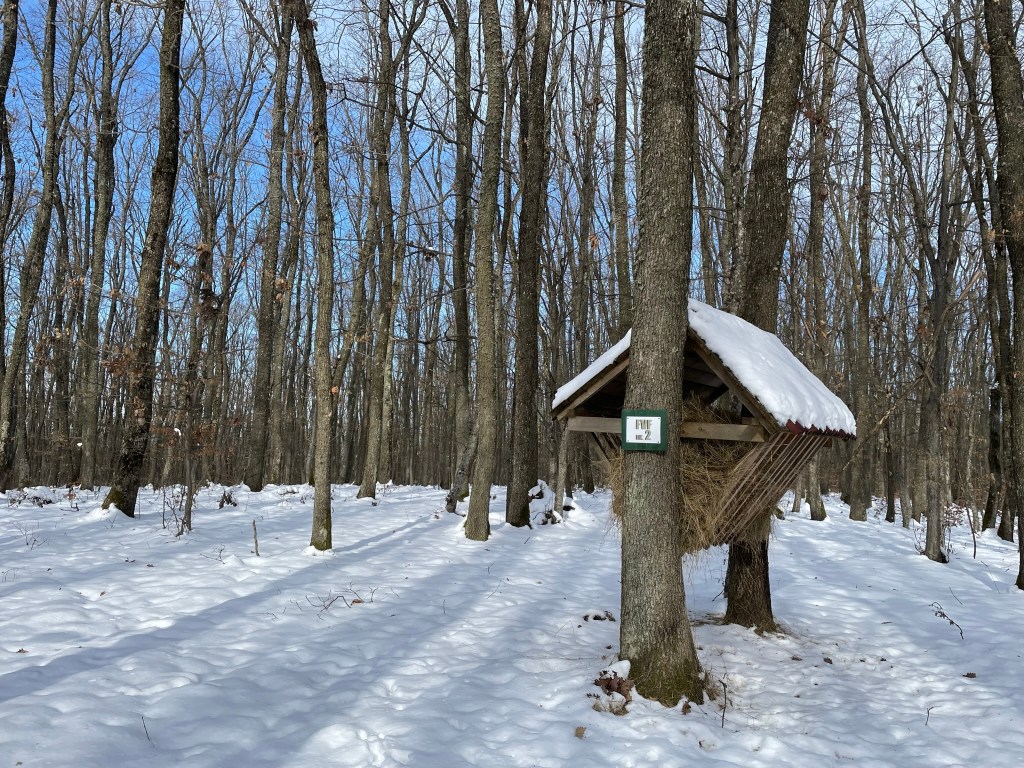

Did you know that trees, like humans, can get sick? They can be damaged by both biotic factors (insects, fungi, rodents and other mammals) and abiotic factors (falling trees and snow breaks, avalanches, fires, floods, landslides, and local pollution).
In order to protect trees from damage caused by biotic factors, an integrated pest management method can be applied in the arboretum by protecting birds and creating conditions conducive to their installation and development. This method does not involve the use of chemicals or pesticides, making it a more nature-friendly method of pest control. Integrated pest management does not aim to completely destroy a pest, but rather to keep it below the critical threshold of damage, making it impossible to eradicate an organism from a biocenosis.
Birds are known for consuming insects, rodents and other small animals that can cause significant damage. Placing birdhouses is a simple and effective method of attracting them to the forest and providing them with a shelter in which to breed. They can be placed in trees or on poles and can be made from a variety of materials, such as wood, plastic or metal.
Stop 6. Cetățele Lake

We reached the last stop on the Coldău Valley Educational Route. Here we can see Cetățele Lake. This lake was formed behind a large slide wave that started from the top of Cetățele. The region is made up of Badenian and Sarmatian sediments, predominantly clay-marly, which caused large-scale landslides to occur. The undermining of the left slope of the Ilișua Valley and the lithology of the sediments that make it up, in the conditions of a humid climate, generated these large deplasious and subsequent landslides.

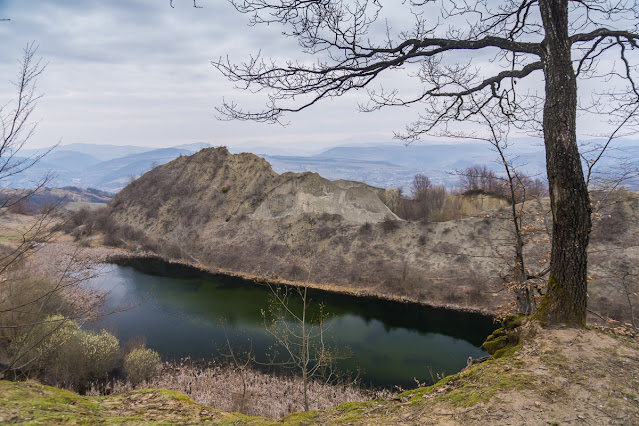
The depression where Cetățele Lake (or Căian’s Lake) is located had the appearance of huge pits, framed by the steep and high slopes of the place of detachment and the body of the slide (approximately 40 meters from the lake surface). The lake has an oval-elongate shape in the northwest-southeast direction, a length of 227 meters, a width of 64 meters and an estimated depth of 4.85 meters. Legends say that this lake never dries up, being constantly fed with water from precipitation and springs in the area.
The depression where Cetățele Lake (or Căian’s Lake) is located had the appearance of huge pits, framed by the steep and high slopes of the place of detachment and the body of the slide (approximately 40 meters from the lake surface). The lake has an oval-elongate shape in the northwest-southeast direction, a length of 227 meters, a width of 64 meters and an estimated depth of 4.85 meters. Legends say that this lake never dries up, being constantly fed with water from precipitation and springs in the area.

In addition to its natural beauty, Cetățele Lake is associated with several legends and folk tales. A legend says that the lake was created by a shepherd who lost his sheep. While searching for his flock, he found a beautiful woman who offered him help. The shepherd fell in love with the woman and proposed to her, but she refused him. Disappointed, the shepherd threw a rock at the place where the woman was, and the water gathered around the rock, forming Cetățele Lake.
Another myth says that Cetățele Lake was created by forest spirits to protect a treasure hidden under the water. It is said that every year on St. Andrew’s Day, the spirits would be seen around the lake, guarding their treasure.
Today, this lake is a popular destination for tourists and fishermen. It is an oasis of peace and nature in the middle of a spectacular mountain landscape and is an important tourist attraction for Bistrița-Năsăud county.

Designed by Roxana Lombrea.
